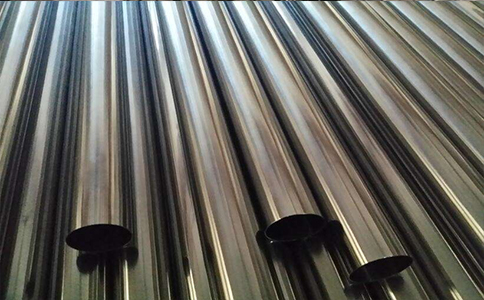
316LStainless steel welded Tube
In recent years, the development trend of stainless steel welded pipes has been relatively good. Regardless of the scale, quality, and production technology, there have been relatively large advances, and in particular its demand areas have also gradually expanded. In addition, as the stainless stee
PRODUCT INTRODUCTION
316L is a brand of stainless steel, AISI 316L is the corresponding American brand and Sus 316L is the corresponding Japanese brand. China's unified digital code is s31603, the standard brand is 022cr17ni12mo2 (new standard), and the old brand is 00Cr17Ni14Mo2, which indicates that it mainly contains Cr, Ni and Mo, and the number indicates the approximate percentage.

Chemical composition of 316L stainless steel welded tube:
| C | Si | Mn | S | P | Cr | Ni | Mo |
| ≤0.030 | ≤1.00 | ≤2.00 | ≤0.030 | ≤0.045 | 16.00~18.00 | 10.00~14.00 | 2.00~3.00 |
Corrosion resistance of 316L stainless steel welded tube:
316L is widely used in the chemical industry because of its excellent corrosion resistance. 316L is also a derivative steel of 18-8 austenitic stainless steel, with 2 ~ 3% Mo added. On the basis of 316L, many steel grades are also derived. For example, 316Ti is derived after adding a small amount of Ti, 316N is derived after adding a small amount of N, and 317L is derived by increasing the content of Ni and mo.
Most of the existing 316L on the market are produced according to American standards. In consideration of cost, steel mills generally limit the Ni content of products to the lower limit as far as possible. The American standard stipulates that the Ni content of 316L is 10 ~ 14%, and the Japanese standard stipulates that the Ni content of 316L is 12 ~ 15%. According to the minimum standard, there is a difference of 2% in Ni content between American Standard and Japanese standard, which is reflected in the price. Therefore, when purchasing 316L products, customers still need to see whether the products refer to ASTM or JIS standards.
The Mo content of 316L makes the steel have excellent pitting corrosion resistance and can be safely applied to the environment containing Cl - and other halogen ions. Since 316L is mainly used for its chemical properties, steel mills have slightly lower requirements for surface inspection of 316L (compared with 304), and customers with higher surface requirements should strengthen surface inspection.
Mechanical properties of 316L stainless steel welded tube:
| Tensile strength σ b (MPa) | Conditional yield strength σ 0.2 (MPa) | Elongation δ 5 (%) | Reduction of area ψ (%) | Hardness | Density | Specific heat capacity ratio (20 ℃) |
| ≥480 | ≥177 | ≥40 | ≥60 | ≤ 187hb; ≤90HRB; ≤200HV | 7.98g/cm3 | 0.502j / (g * k) |
Heat treatment:The solid solution is cooled rapidly at 1010 ~ 1150 ℃.
Metallographic structure:The microstructure is austenitic stainless steel.

